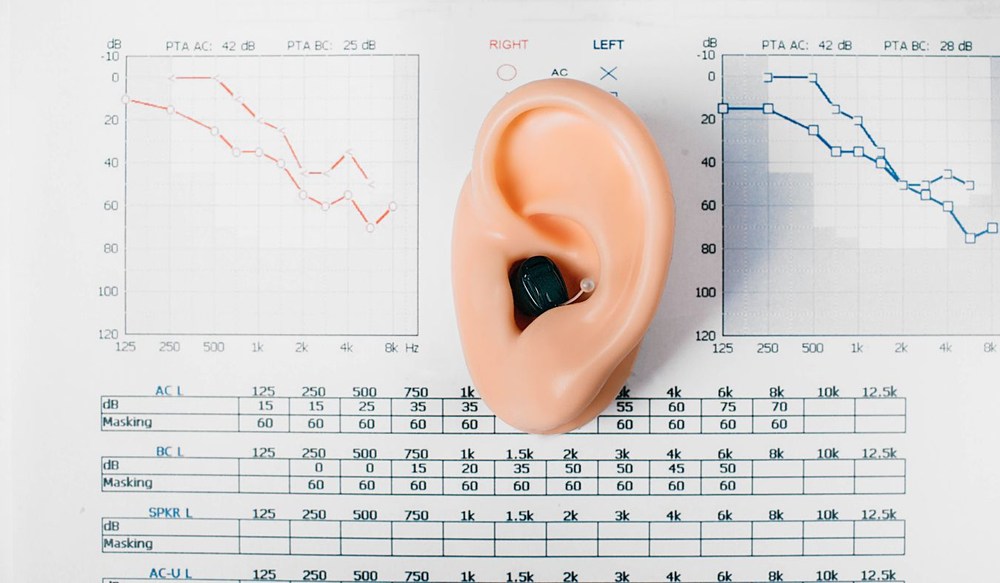How to Create a Hearing-Friendly Home Environment
Your home is where you spend a significant portion of your time, and it

By: admin | August 28, 2024
Keeping your hearing health in check is important, and to do so, you need to understand the different types of hearing tests available. These tests, carried out by trained specialists, help determine the extent and nature of any hearing loss you might be facing. There are various types of tests, each serving a unique purpose in assessing your ability to hear and interpret sounds.
Being aware of these tests allows you to make informed decisions about your hearing health care. Understanding the differences between these tests could be a significant step towards enhancing your overall quality of life.
Regular hearing tests are key to your hearing health. They help monitor changes and identify any potential issues early on.
These tests are important because they can detect gradual hearing loss that may not be immediately noticeable. Catching these changes early allows you to work with your audiologist to address them quickly, reducing the risk of further deterioration. Regular check-ups can also help rule out other related issues such as ear infections or blockages that could potentially affect your hearing health.
When you come in for a hearing test, the initial part of the appointment is all about gathering important information. The audiologist will start by asking about your medical history, any hearing concerns you might have and how hearing issues might be affecting your daily life. This step is crucial because it helps the audiologist understand your unique situation and tailor the test to your specific needs. It also provides context for interpreting the results later on.
Once this information is collected, the testing process begins. This involves a series of evaluations designed to assess various aspects of your hearing. The goal is to get a clear picture of your hearing ability and identify any issues that might need addressing. By the end of the appointment, the audiologist will have a comprehensive understanding of your hearing health, which will guide the next steps in your care.
Pure-tone testing is a straightforward yet effective evaluation and is a fundamental part of hearing health assessments.
This test measures your ability to hear different sounds, pitches and frequencies. It’s conducted using headphones and a machine that plays a series of tones at varying volumes. You respond when you hear these tones, providing the specialist with valuable information about your hearing capabilities.
This test can help identify any potential hearing loss you might have, allowing for timely intervention. Understanding the basics of pure-tone audiometry enables you to actively participate in your own hearing health care.
Speech audiometry is another critical aspect of hearing tests. This test assesses your ability to understand speech, a crucial part of everyday communication.
During speech audiometry, you listen to and repeat words or sentences at different volumes. The specialist then records how accurately you understand and reproduce these words. This test provides a clear picture of how well you can comprehend speech in both quiet and noisy environments.
With this understanding, you’re better equipped to work with your specialist in addressing any potential issues with understanding speech. The goal is not just to hear but to understand what you’re hearing. By taking proactive steps towards maintaining your hearing health, you’re investing in your overall quality of life.
Tympanometry is a test that evaluates the function of the middle ear. It’s crucial in assessing the mobility of your eardrum and the air pressure in your middle ear, providing key insights into their overall health.
Tympanometry helps detect any abnormalities or issues in your middle ear that could be contributing to hearing loss. However, it’s important to note that this test alone cannot determine your ability to hear and must be used in conjunction with other hearing tests for a comprehensive evaluation. Tympanometry may cause slight discomfort due to changes in air pressure but rest assured, it’s generally well-tolerated and poses minimal risks.
Otoacoustic emissions tests allow audiologists to examine your inner ear health in a detailed manner, specifically focusing on the tiny hair cells that play a vital role in our ability to hear.
When these tiny hair cells are healthy and functioning properly, they produce sounds (or emissions) in response to certain tones. The OAE assessment checks whether these ‘musical notes’ are being played correctly. If they aren’t, it could indicate potential issues with your hearing health. Regular testing helps keep track of any changes and allows for timely intervention if needed.
Auditory brainstem response testing is a unique test designed to evaluate your hearing pathway – the route sound takes from your ear to your brain. Here’s how it works:
Bone conduction tests are an integral part of the hearing assessment process and play a vital role in identifying different types of hearing loss.
Bone conduction assessments work by bypassing the outer and middle ear, directly stimulating the inner ear through vibrations. This process helps distinguish between sensorineural and conductive hearing loss – two common types of hearing loss that require different treatment approaches.
According to the National Institute on Deafness and Other Communication Disorders (NIDCD), nearly 15% of adults in the U.S report trouble hearing. With such a significant number, understanding tests like bone conduction becomes all the more important in managing your hearing health effectively.
Understanding your hearing test results is essential for addressing any hearing concerns effectively. When you receive your results, you’ll notice a graph called an audiogram, which charts your hearing sensitivity at various frequencies. The audiogram helps audiologists determine the range of sounds you can hear and identify any hearing loss. Each frequency is represented on the horizontal axis, while the vertical axis shows the intensity of sound. The results will be plotted as symbols, indicating your hearing threshold for different pitches.
Your hearing test results will also include details about your hearing loss type and degree. The primary types are sensorineural, conductive and mixed hearing loss. Sensorineural hearing loss, often related to aging or noise exposure, affects the inner ear or auditory nerve. Conductive hearing loss involves issues with the outer or middle ear, such as fluid buildup or ear infections. Mixed hearing loss includes elements of both types. The degree of hearing loss ranges from mild to profound, reflecting how much hearing ability is affected.
Interpreting these results with your audiologist is crucial for developing an appropriate treatment plan. Your audiologist will explain how your hearing loss impacts daily life and discuss options like hearing aids or other interventions. Understanding your results not only helps you make informed decisions about hearing aids but also empowers you to take proactive steps in managing your hearing health.
The initial outcome of your hearing test reveals your ability to perceive different frequencies and their corresponding intensities. Frequencies refer to the pitch of sounds—ranging from high to low—while intensity measures the volume of these sounds. The audiogram, a key component of the test, charts these frequencies and decibels (dBs) to illustrate how well you can detect various pitches and how loudly you can hear them.
During the test, an audiologist will present a range of frequencies to gauge your hearing sensitivity. This helps determine whether your hearing ability falls within the expected range for your age and lifestyle or if there are indications of hearing loss. Your responses will be plotted on the audiogram, providing a clear picture of your hearing across different pitches and volumes.
It’s also possible that the hearing test will reveal variations between your left and right ears. This could be due to lifestyle factors like frequent headphone use or exposure to loud environments. The test results will help your audiologist assess whether one ear needs additional support or intervention. For more insights into how hearing tests work and what the audiogram reveals, contacting an audiologist can provide valuable information to help you understand and protect your hearing health.
After your hearing test, it’s time to think about the next steps. You’ve gained valuable insights into your hearing health, but what should you do with this information? The first step is to thoroughly review the results with your specialist. They can provide personalized recommendations based on your specific situation and needs.
The second step is to take action. This might involve scheduling regular follow-up appointments to monitor your hearing or considering the use of hearing aids if recommended by your specialist. Proactive care is essential in maintaining optimal hearing health and improving your overall quality of life.
Understanding the variety of hearing tests available and their unique roles in assessing your hearing health is an essential step towards maintaining optimal hearing health. These tests, conducted by skilled specialists, provide a comprehensive understanding of your ability to hear and interpret sounds. Armed with this knowledge, you’re better equipped to make informed decisions about your hearing health care.
However, understanding the differences between various types of hearing tests is just the beginning. It’s equally important to take action based on this understanding. If you find yourself struggling with any aspect of these tests or if you wish to learn more about them, we encourage you to reach out for professional help.
At Hearing Aid Consultants of North Mississippi, our team is ready and eager to assist you in this process towards better hearing health. Don’t hesitate to contact us at our Oxford location at (662) 234-1337 for more information or any queries related to differentiating between types of hearing tests.
Taking proactive steps today can significantly improve your overall quality of life tomorrow. We look forward to helping guide you on this process towards better hearing health.

Your home is where you spend a significant portion of your time, and it
By: admin | October 20, 2025

Walking into a hearing clinic for the first time can feel like entering
By: admin | July 29, 2025

The hearing aid technology available today is vastly different from what
By: admin | June 20, 2025
